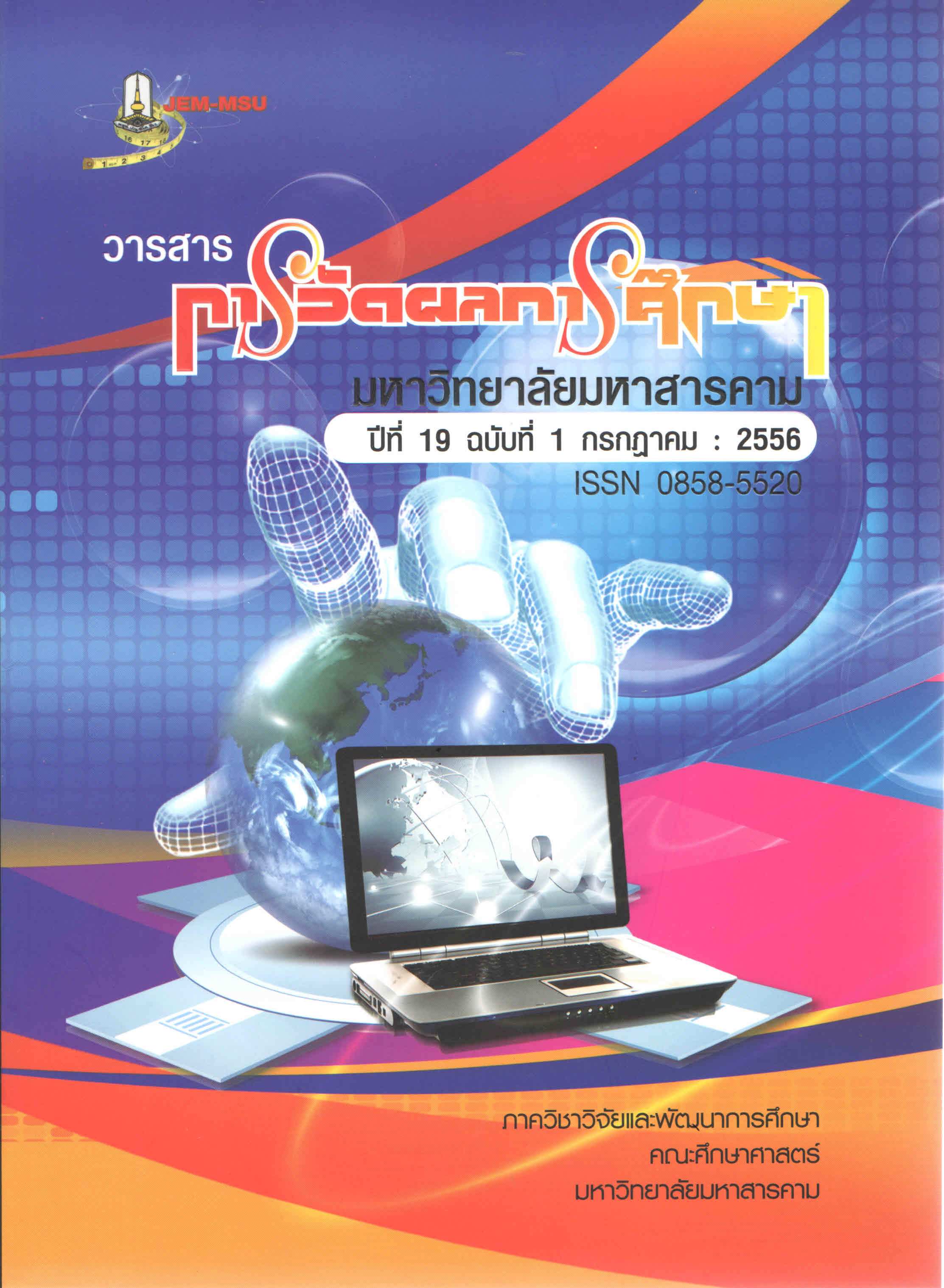Comparisons of Analytical Thinking, Mathematics Solving and Learning Achievement Entitled Decimals Addition, Subtraction and Multiplication of Prathomsuksa 5 Students who learned between using Activities Based on Constructivist Theory and the Traditional Approach
Main Article Content
Abstract
The organization of learning based on constructivist theory can promote learners to
construct the meaning that found by themselves relying on their prior experiences or knowledge
available, which will originate learning and will have knowledge from interactions with other
people and environments. Learners begin practices, think analytically according to the given
problem situations, participate in sharing learning, present their ideas, and lead them to such
learning. The purposes of this study were : (1) to develop plan for organizing of learning based on
constructivist theory and the traditional approach entitled decimals addition, subtraction and
multiplication of Prathomsuksa 5 with the efficient criteria of 75/75, (2) to find out the effectiveness
indices of instructional plans for organizing of learning based on constructivist theory and the
traditional approach entitled decimals addition, subtraction and multiplication of Prathomsuksa 5,
and (3) to compare analytical thinking, mathematics solving and learning achievement entitled
decimals addition, subtraction and multiplication of Prathomsuksa 5 students who learned
between using activities based on constructivist theory and the traditional approach. The sample
used in this study consisted of 78 Prathomsuksa 5 students attending Anubaljumpholphonphisai
School, Nongkhai Province in the second semester of the academic year 2011, selected through
the cluster random sampling technique. The students were devided into an experimental group
and control group, each of 39 students. The experimental group learned using activities based on
constructivist theory while the control group learned using the traditional approach. The research
instruments were : 16 plans for organizing of learning based on constructivist theory and 16 plans
for the traditional approach entitled decimals addition, subtraction and multiplication of
Prathomsuksa 5 ; a 30-item achievement test with discriminating powers ranging from .23 to .63
and a reliability of .86 ; a 30-item analytical thinking test with difficulties ranging from .39 to .74
discriminating powers ranging from .21 to .63 and a reliability of .80 and a 30-item mathematics
solution test with difficulties ranging from .21 to .74 discriminating powers ranging from .21 to .53
and a reliability of .84 The collected data were analyzed by means of percentage, mean and
standard deviation : and Pearson Product Moment Correlation Coefficient and Hotelling’s T2 were
employed for testing hypotheses.
The results of the study were as follows :
1. The plan for organizing of learning based on constructivist theory and the traditional
approach entitled decimals addition, subtraction and multiplication of Prathomsuksa 5 had an
efficiency of 84.70/84.62 and 79.67/75.90 respectively.
2. The effectiveness indices of instructional plans for organizing of learning based on
constructivist theory and the traditional approach entitled decimals addition, subtraction and
multiplication of Prathomsuksa 5 were .6648 and .4807 respectively.
3. The Prathomsuksa 5 who learned using activities based on constructivist theory had
higher thinking, mathematics solving and learning achievement entitled decimals addition, subtraction
and multiplication than those learned using traditional approach at the .05 level of significance.
Article Details
The content and information contained in the published article in the Journal of Educational Measurement Mahasarakham University represent the opinions and responsibilities of the authors directly. The editorial board of the journal is not necessarily in agreement with or responsible for any of the content.
The articles, data, content, images, etc. that have been published in the Journal of Educational Measurement Mahasarakham University are copyrighted by the journal. If any individual or organization wishes to reproduce or perform any actions involving the entirety or any part of the content, they must obtain written permission from the Journal of Educational Measurement Mahasarakham University.


